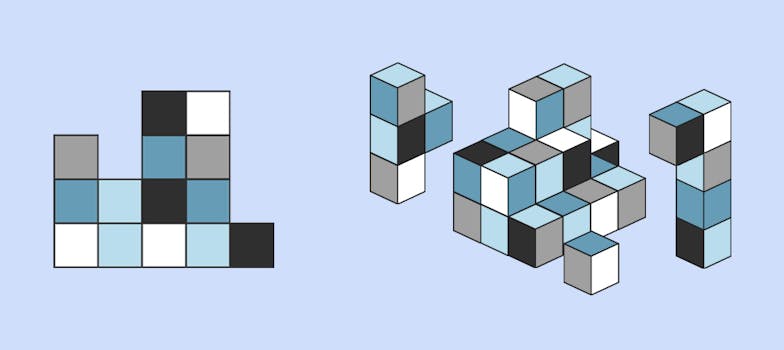Are your cognitive abilities up to the demands of today's work life? You can test them here, but it's always a good idea to keep your mental fitness in shipshape condition and increase your proficiency. Not only will this positively affect your career, but it will also yield rewards in your personal life. Everyone appreciates someone who's mentally on the ball.
To help you improve upon the foundational skills that employers look for, our short series of dedicated articles returns with its second installment. Last time, we focused on your memory, remember?
Today, we'd like to state the blatantly obvious: if you want to get ahead in your job, you first need to know your way around. We'd like you to take this literally. You need to spatially recognize your surroundings. Pronounced spatial reasoning skills don't only come with the ability to orientate yourself, they also allow you to mentally rotate objects and understand their relationship to their environment in three dimensions.
Your visual-spatial reasoning will work best when it's frequently used. There are several ways to train your visualization and orientation capabilities, both from the comfort of your armchair and out in the field. Mazes are a good starting point: Trying to find your way through a labyrinth, be it on paper or in a park, will equally challenge your memory and your sense of direction.
Another hands-on approach to get the proper neurons firing while at the same time delighting your inner child is playing with building blocks or Lego bricks. This way, you can promote your three-dimensional reasoning and your imagination in a tangible manner. If you deem this too childish or too easy, you can step it up a notch with mechanical puzzles which come in a variety of styles; Assembly, interlocking or disentanglement puzzles as well as the ever-popular Rubik’s Cube will challenge your gray matter in a most entertaining fashion..
Test Your Cognitive PerformancePut yourself on the map – by using it
To further improve upon your spatial reasoning, with the added benefit of getting a lungful of fresh air, do this: Whenever you visit an unfamiliar location, use a map to find your way. Not the one on your cell phone, mind you, but an old-fashioned paper map that won't give you voice-assisted directions. This will put your ability to translate two-dimensional information into three-dimensional orientation to the test: Which streets do the lines on the piece of paper correspond to? Which building does the colored square represent? What is that blue blob supposed to be? And how do you get from here to there?

The experience may be frustrating at first but remember: Practice makes perfect. In addition, folding your map after you have used it is a visuospatial challenge in itself.
As an avid map user, you'll be able to find your way around anywhere. Furthermore, your strengthened spatial reasoning skills will positively impact your ability to think abstractly, which can be immensely helpful in most workplaces. And in the increasingly rare cases that you do find yourself lost after all; you have our blessing to ask your phone for directions.

